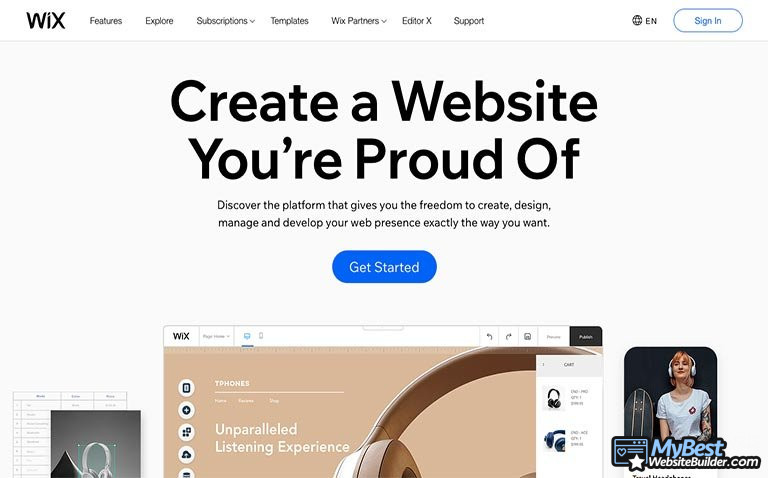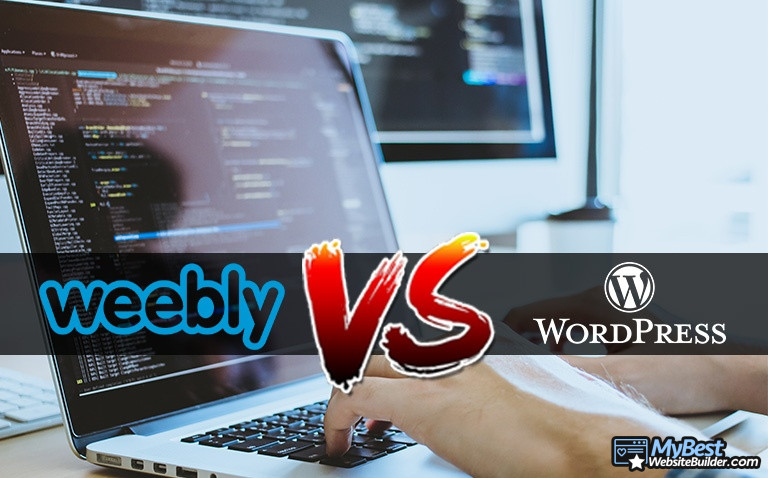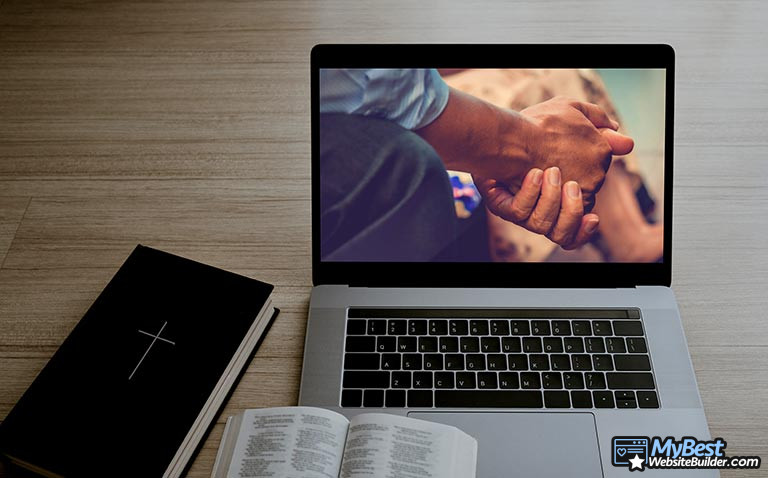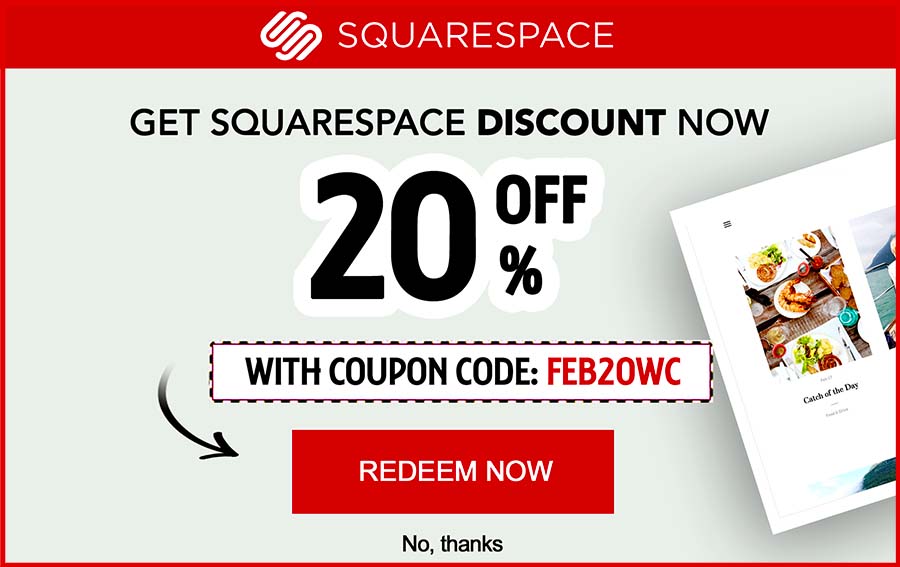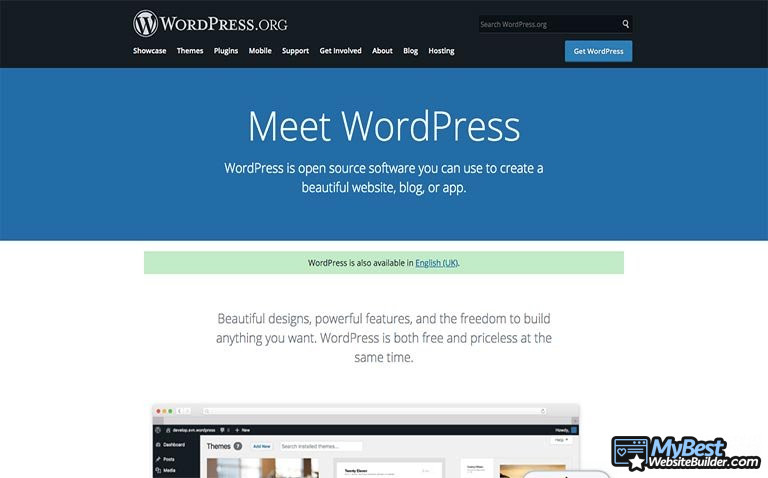
Did you know that around 35% of the entire web is built with WordPress? With an estimated 2 billion websites out there, that would make up around 700 million sites - absolutely insane! No wonder that WordPress tutorials are among the most sought-after!
WordPress is a very unique website creation tool - I must say, out of all of the similar tools that I have used throughout my career, WP has been my favorite, hands-down. There are many reasons why that’s the case - we’ll get into it in a minute.
Now, do keep in mind that WP isn’t exactly a website builder per se - at least not the WordPress that we’ll be talking about in this article. If you’re interested in some of the more traditional website builders out there, do check out our list of the best builders on the current market.
That said, let’s get straight into the WordPress tutorial for beginners.
According to you, what is the best website builder for personal use?
For me, personally, WordPress is the best platform for building websites. But, WordPress can be overwhelming for many people that want to launch a new site and hit the ground running. When deciding on a platform for your website, take your level of "techiness" and experience learning new software into consideration. Many of the website builders available today have been designed for beginners. You can literally "drag and drop" your website together using a clean visual editor.
Table of Contents
- 1. WordPress Tutorial: Why Choose WordPress?
- 2. How to Use WordPress: A 7-Step Learning Process for Newbies
- 2.1. Step 1: Take the Easy Route - Find a Reliable Hosting Provider
- 2.2. Step 2: Accessing Your Website
- 2.3. Step 3: Get to Know the Interface
- 2.4. Step 4: Theme Choice and Installation
- 2.5. Step 5: Page Creation
- 2.6. Step 6: Widgets - The True Power of WordPress
- 2.7. Step 7: General WordPress Website Management
- 3. Price
- 4. Conclusions
WordPress Tutorial: Why Choose WordPress?
First up, before we get to the actual WordPress tutorial, I want to mention some of the most prominent features (benefits) that WP has, and why it’s worth using, even if you’ve never used a traditional website builder before.
Even before that, though, let me be clear - in this tutorial, we’re going to be learning WordPress.org. The .com version of WP is a website builder - the .org one is a content management system (CMS), instead.
The actual differences between the two depend on the CMS in questions - some content management systems are going to resemble traditional builder quite closely, yet will possess some CMS functionality (a close example to this would be Webflow).
WordPress is a different story.
WP is famous for having a pretty steep learning curve - if you’ve never created a site before, or even if you have some prior knowledge when it comes to website builders, it’s not really going to help you all that much here. As you’ll soon see in this WordPress tutorial, this site creation tool has some pretty distinct functionality aspects.
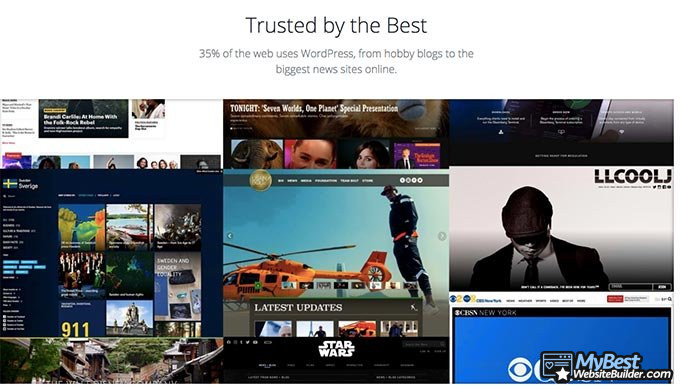
So… Why should anyone choose it over any other quick-and-easy website builder? What’s the actual secret behind the popularity of WP?
It’s quite simple, really - once you learn the ins and outs of WordPress, you’ll be able to create any and all types of websites you can possibly imagine. WP is literally unlimited in its capabilities, unlike most site builders out there.
Learning WordPress from WordPress tutorials is also exceptionally-rewarding if you’re planning a career in the field of IT, or even some of the more online marketing-related spheres. Website developers should also be aware that knowing how to use WP is a must in your field - it’s one of the fundamental tools used in this field of expertise.
Now, granted, this is a WordPress tutorial for beginners - while I won’t teach you how to integrate some custom code into your site or how to launch a full-fledged eCommerce platform with the help of this CMS, we’ll surely touch on some of the more fundamental aspects of WordPress.
So, without further ado, let’s get into it.
How to Use WordPress: A 7-Step Learning Process for Newbies
Let’s face it - if you want to truly learn WordPress, you’re going to put in a lot of time and energy to do so. No guide in the world is going to teach you absolutely everything, since it’s frankly impossible - there are endless different features related to this CMS, and even covering all of the widgets would probably take a couple of books.
Still, though, when it comes to a WordPress tutorial for beginners, some things can be covered rather easily - especially if they’re part of the fundamentals of WP.
As with any other site creation tool out there, let’s take it from the top and start off by talking about the actual registration process, first.
Step 1: Take the Easy Route - Find a Reliable Hosting Provider
If you have actually used a more-traditional website builder before, you’ll notice that the site creation process is quite different, straight from the get-go.
You see, with most website builders on the market, all you need to do is follow a few simple steps on their websites and you’re set - in 5 minutes or so, you’ll find yourself browsing through the site templates and working on your eCommerce features.
This is true with Squarespace, Wix, or any other major website builder out there, too.
However, it’s not the case with WP - the registration process requires a separate section on the WordPress tutorial, in of itself.
Frankly, there are two ways to go about it - either you download WP from the official website, set it up and work on a site offline, or you choose a hosting provider and take it from there. Here, we’ll focus mostly on the latter option.
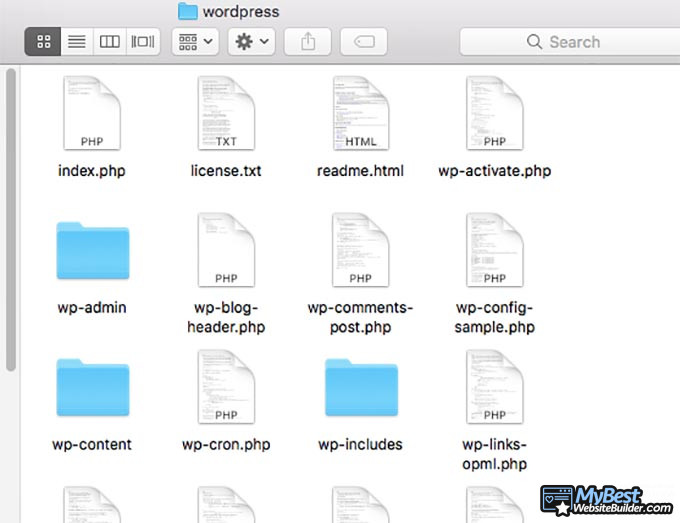
The reason behind this is pretty straightforward, too - setting up an offline WordPress site is a huge hassle, especially if you’ve never worked with MySQL before. Taking the hosting route, you’ll be able to rest assured that there won’t be any issues throughout the entirety of the process.
So, the first thing that you’ll need to do in this WordPress tutorial is to find a reliable website hosting provider. Here are some options that you could check out:
- HostGator - fast, unlimited bandwidth, a lot of different pricing options.
- Hostinger - good uptime stats, very affordable, great customer support.
- BlueHost - 24/7 support, very simple to set up, great uptime.
You see, choosing the right hosting provider is a crucial step - if you make the wrong choice, you don’t even need to read the rest of this WordPress tutorial. Frankly, your site will constantly crash, and you’ll have a pretty bad time, in general.
Once you’ve chosen your hosting service and also the optimal plan for yourself (my advice would be to start off on the lower end, especially if it’s your first site), in most cases, you’ll be provided with the option to one-click-install and launch WordPress.
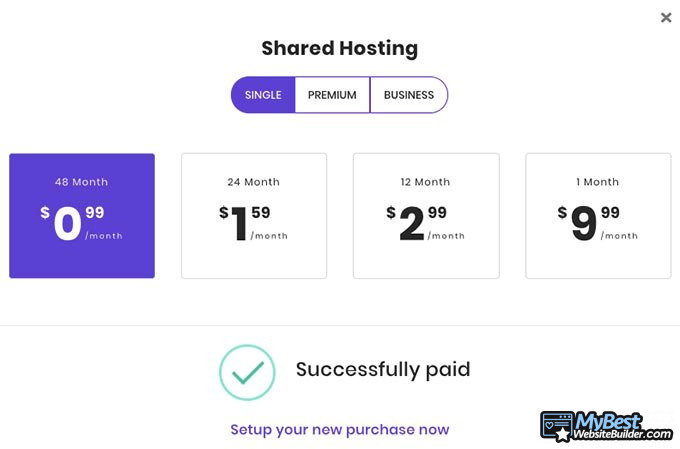
No MySQL, no difficult online setups, no programming involved - none of that.
As a side note, you should also take the time to get to know your hosting provider’s dashboard (i.e. the cPanel). Here, you’ll have to spend time managing your WP site, backing files up, archiving them, and so on.
Another thing that you should figure out while working with your hosting provider is the domain name to your site. Many of the hosting services are going to provide you with a free subscription for a custom domain upon purchasing one of their plans - that’s the best route to take. Keep in mind, though, that it’s a reoccurring subscription - meaning, you’ll probably have to extend it in a year or so.
Latest Squarespace Coupon Found:
SAVE 20%
Squarespace Limited-Time Deal
Grab this Squarespace offer code & enjoy a lovely 20% off on any selected Squarespace subscription plan. Create your dream website NOW!
Step 2: Accessing Your Website
Once you’ve gotten all of your information set up and figured out, the next thing to do is to actually access your website.
Well, I guess not really the website itself - at least not yet. There’s still nothing to really access, now is it?
Instead, you should now go to your WordPress dashboard. Here, you’ll perform all of the processes that have to do with the actual creation of your website.
There are a couple of ways to access your WP dashboard. The easiest route would be to go there via a button from your hosting provider’s panel - no matter your hosting service of choice, there should be one available.
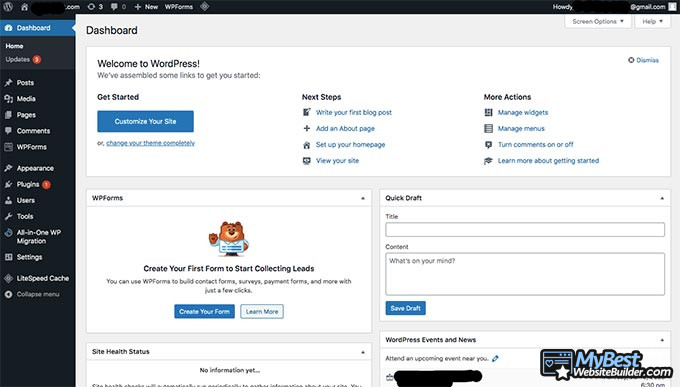
Another route that you’d find mentioned in many user WordPress tutorials would be to simply enter the name of your domain into the URL bar, and then add “/dashboard” or “/admin”. So, if the name of your domain is “mywordpresswebsite.com”, it would look like so:
www.mywordpresswebsite.com/admin
There isn’t really a difference between the two above-mentioned dashboard accessing routes. That said, if you want to learn WordPress, it might actually be easier to follow the latter, since you can simply access it by typing some information into the URL bar, instead of having to go and log into your hosting service panel every time.
Step 3: Get to Know the Interface
So - welcome to WordPress!
If you’re serious about your website creation ventures, then get used to the screen that you’ll see upon first logging into the WP dashboard - you’re going to be seeing it quite often.
In all honesty, even today, every single time I log into WP, I get some nostalgic vibes from the homepage section. While I’ve altered it with some plugins and other widgets, the core design is still the same - classic WordPress.
Enough of the nostalgia trips, though - let’s talk interface design.

At this point, you should make sure to take your time to study the actual interface that you see in front of you. As noted above, it’s probably going to change significantly as you progress with your website and install more plugins, but still - the core idea will remain the same.
The cool thing about WordPress is that, while being significantly more complicated than a traditional website builder, it does have a more clear layout than most of the current builders out there. The design choices for the WP interfaces were very simple and old-school, but also very straightforward - that’s a good thing!
All of your main attention should be focused on the left side of your screen - namely, to the list of various interfaces that you can open. With some exceptions, this is the area that you be clicking through the most.
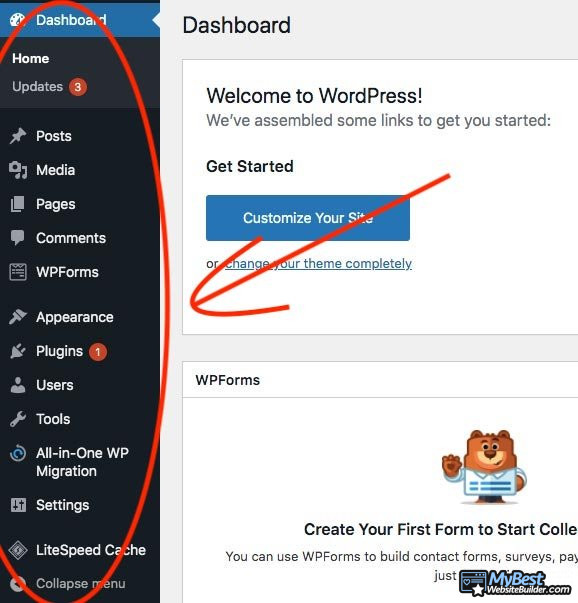
If you want to learn WordPress “the proper way”, do make sure to not rush through the options that you see here. Every new button is going to have a few more pop-ups, so you should surely make sure to figure out where things are in the dashboard before progressing further.
Once you press on something, you’ll be taken to a new window, where you’ll be able to perform the processes that you’d like.

Did you know?
Have you ever wondered which website builders are the best for your business?
See & compare TOP website builders side by sideStep 4: Theme Choice and Installation
While figuring out how to use WP might require a WordPress tutorial for beginners, there are some things that the CMS does have in common with other website builders out there. One of these things would have to be the theme selection.
Well, at least the timing of when you’d do it - frankly, it’s going to be one of the first things that you’ll want to do when you first open up your WordPress dashboard.
In the “Appearance” section ("Theme" sub-section) on the left, you’ll be able to pick from a few different default themes. If you’d like to make your site more original, then you can always download new theme templates - ones created by the WordPress community. The downloading and installation processes are actually quite simple - just find the desired theme, download and apply it.
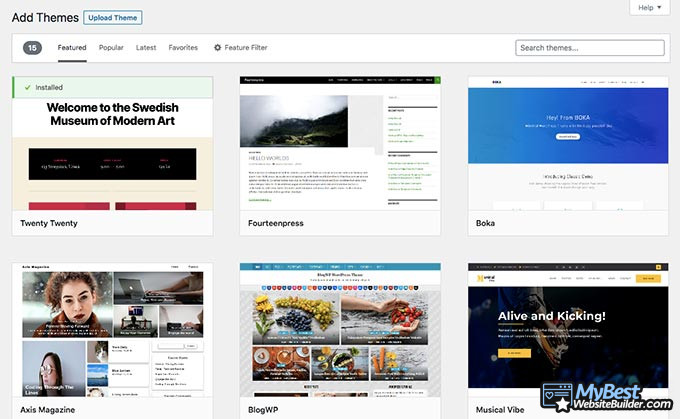
Make sure to try different themes out, and see which fits the “vibe” of your website best. You’ll be able to preview them, check how they work, and also even read some other user reviews and general feedback in the community section, too.
While it may take some time finding the best template for yourself, that’s normal - after all, there’s a pretty vast number to pick from! Do make sure to delete (rather, uninstall) the unused templates afterward - got to keep the dashboard uncluttered and working properly!
Step 5: Page Creation
This is where the biggest differences between WordPress and some of the more traditional website builders reveal themselves.
Creating a specific page with WordPress is nothing like doing the same thing with a website builder. When you’re working with a builder, in the vast majority of cases, it’s going to have drag-and-drop functionality, and will abide by the “WYSIWYG” principle - in other words, you’ll be able to alter your page contents by clicking on a section, and the changes will look the same live as they do while you’re editing.
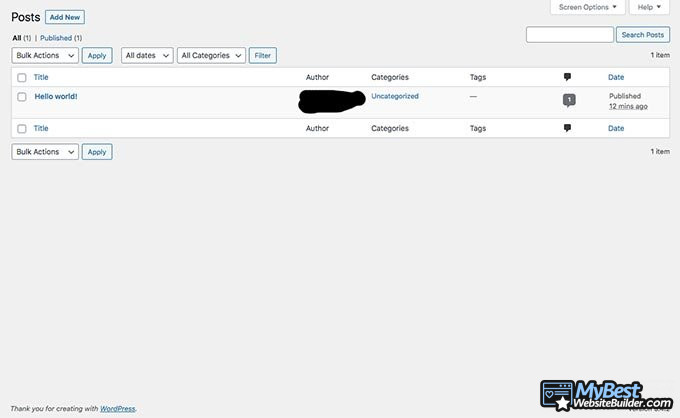
Not really the case with WordPress, though - at least if you use the default page editor, and not some specific plugin.
If you navigate to the “Posts” tab, you’ll be able to see all of your existing pages (at first, there will only be some default ones), and create new ones. The tricky part here is that it all happens from your dashboard, and while you can preview it as often as you’d wish, the changes that you make might still look different on your site from those in your page editor.
Also, once you finish editing, you’ll need to assign the pages to some directories, too - the process isn’t self-intuitive, as with some website builders.
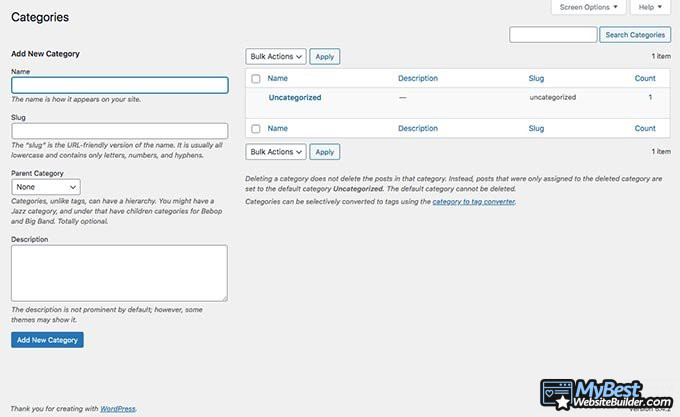
Now, naturally, as you can see from this WordPress tutorial, creating pages is a pretty complex process that requires a lot of patience, determination and testing. Having said that, though, all of this can be helped with some widgets and WordPress extensions.
Step 6: Widgets - The True Power of WordPress
To tell you the truth, it would be difficult to find words that express just how important widgets are when it comes to learning WordPress. They are literally a cornerstone of the CMS, and can solve any and all issues that you might face while working with the site creation tool.
From the “Plugins” tab, you’ll be able to browse the incredible list of community- and professional-made widgets and other WordPress apps. I cannot stress this enough - there’s a widget for everything.
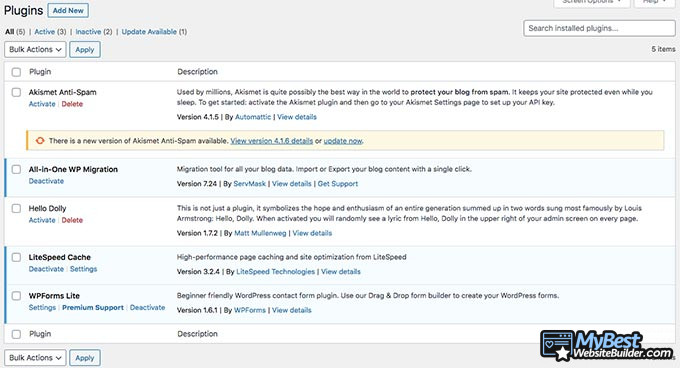
Contact forms, eCommerce integrations, SEO, page builders, automated text-based content checkers and managers, interactive themes - I could literally go on forever! No matter what sort of a site it is that you want to create, there will surely be a widget to help you out!
That being the case, not all widgets are actually useful, and some of them are going to be helpful only in specific situations - situations that are too complex, and are thus not part of this WordPress tutorial for beginners. With that, here are some of the most important widgets for WordPress that you should install immediately after booting up your dashboard:
- Elementor - a drag-and-drop page builder for WP. Literally solves all of the difficulties with WordPress’ page creation processes.
- WooCommerce - the ultimate WP extension for eCommerce - an absolute must if you plan to sell anything on your site.
- WPForms - one of the mostly-used WordPress contact form plugins.
- Yoast SEO - the ultimate all-in-one SEO plugin for WP.
- WP Rocket - a beginner-friendly site caching plugin.
- Google Analytics - allow you to integrate GA into your WP dashboard.
Naturally, there are going to be many more useful widgets that you’re going to install as you upgrade your website. Still, these are some of the most important ones when you’re just starting out.
The installation process for all of them is pretty straightforward, too - just pick the plugin that you want, and WP will install it for you, with the actual plugin appearing somewhere in your navigation panel, on the left part of the screen.
Step 7: General WordPress Website Management
At this point in the WordPress tutorial, you should have a pretty good idea of where things are in the dashboard, how the page creators works, and also about the importance of widgets.
Now, all that’s left to do is to create the sort of a website that you’d like… And to then manage it appropriately.
Truth be told, many people neglect this aspect of a WordPress tutorial - that should not be the case! Learning WordPress doesn’t stop at creating pages or pressing “Publish” - it involves general site management, too!
Some tips that you could follow:
- Make sure that your posts are SEO-friendly - this can be done with some widgets, such as the Yoast SEO one;
- Back up your site periodically - that’s very important!
- There are widgets that can help you deal with everything-GDPR - look into them, since it’s important from a legal perspective!
- Always check for WP updates and make sure you’re using the most recent version of the CMS;
- Some widgets aren’t compatible with others, and can cause errors on your website - take care not to over-do it in the plugin department!
These are a few of the more general tips that you can take from this WordPress tutorial for beginners and follow, but there’s a lot more to it. One of the best things about WP is that it has a very active and ever-growing community - make sure to check some groups out, and learn from what experienced WP users have to offer!
Price
While this section technically doesn’t need to exist in a WordPress tutorial, some people still tend to have questions regarding the topic of WordPress pricing, so let’s clear it out, once and for all.
WordPress.org is completely free to download and use. The only costs that have to do with WP are those for some specific templates or widgets - however, naturally, they are not mandatory.
Now, if you want to create an actual, published website, you’ll need website hosting and a domain name - these things, on the other hand, are paid services. The actual prices, though, depend on the hosting provider that you pick.
Conclusions
We’ve reached the end of this WordPress tutorial - thank you for reading! I do hope that it succeeded in helping you learn about the very fundamentals of WordPress.
| SQUARESPACE | WEBFLOW | WEEBLY | |
| Most suitable for great visuals | Most suitable for web designers | Most suitable for small businesses | |
| All Squarespace Coupons | All Webflow Coupons | All Weebly Coupons | |
| A great website builder for both individuals and small business alike. | A solid choice for anyone who likes a challenge. | Simple, but Modern and Attractive | |
|
Visit site
Read review |
Visit site
Read review |
Visit site
Read review |
|---|
Table: Website builder alternatives to WordPress
If you’re interested in some of the more traditional website builders, though, you could also check out our list of the best builders out there - perhaps you’ll find a pretty decent alternative?
Contributed by: Ilir Salihi , Head of Content at FreedomRep
Ilir is a blogger, affiliate marketer, and digital marketing consultant. He began his online marketing journey in 2012 and hasn't looked back since. He enjoys sharing what he's learned over the yea...
Read Full Bio...Leave your honest feedback
Leave your genuine opinion & help thousands of people to choose the best website builder. All feedback, either positive or negative, are accepted as long as they’re honest. We do not publish biased feedback or spam. So if you want to share your experience, opinion or give advice - the scene is yours!


